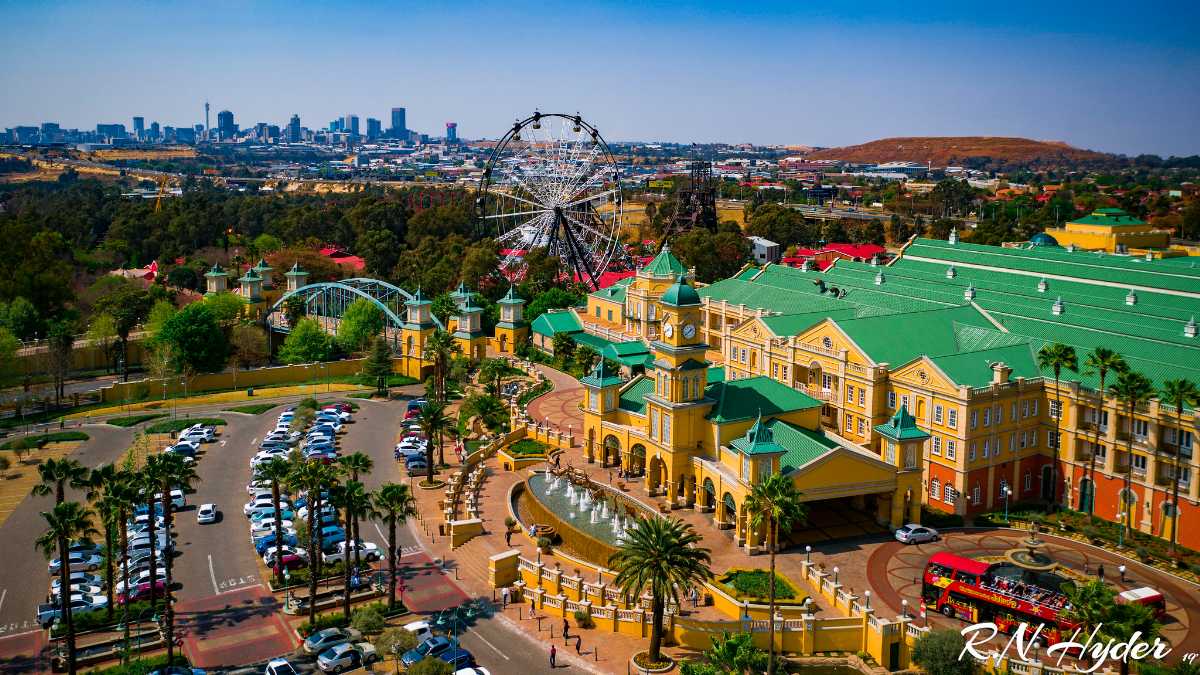Our Johannesburg North Attractions Statements
Our Johannesburg North Attractions Statements
Blog Article
Not known Incorrect Statements About Johannesburg North Attractions
Table of ContentsRumored Buzz on Johannesburg North AttractionsThe Greatest Guide To Johannesburg North AttractionsThe 8-Second Trick For Johannesburg North AttractionsThe 4-Minute Rule for Johannesburg North AttractionsAn Unbiased View of Johannesburg North AttractionsThe 45-Second Trick For Johannesburg North Attractions
The city grew on the edge of the Witwatersrand Key Reef, a subterranean stratum of gold-bearing quartz-silica conglomerate that arcs for hundreds of miles beneath the Highveld - Johannesburg North attractions. Many of the gold mines in the city stopped operation in the 1970s, but in its day the Witwatersrand gold sector accounted for even more than 40 percent of the world's annual gold manufacturing.Johannesburg has a warm environment. Summertime temperature levels average concerning 75 F (24 C); winter temperatures average regarding 55 F (13 C) and only periodically dip listed below cold. The city takes pleasure in about 8 hours of sunlight daily in both wintertime and summer season. Rain averages regarding 28 inches (700 millimetres) per annum, yet the overall differs substantially from year to year.
What rain the city gets drops virtually solely in the summer season months, typically in spectacular late-afternoon electrical tornados., where many locals still rely on coal for fuel.

6 Easy Facts About Johannesburg North Attractions Explained
The equilibrium of the city is inhabited by whites. Lodging varies in character and top quality.
Physical growth, although somewhat restricted by transport, continued promptly as migration to South Africa, and Johannesburg in particular, increased considerably.
Most inadequate residential areas were combined, with poor blacks and whites living with each other, although the rich suburbs were generally scheduled for whites.
The previous system of eleven numbered areas was reorganised in 2006. Marshalltown, as seen from the top of the Carlton Centre. The M1 and M2 run behind the structures, and the southern suburban areas extend past the highway limit. The internal city of Johannesburg lies within the city's Region F. The number of people living in the internal city on a casual basis is unknown, as lots of are illegal immigrants. The unemployment, education and learning, and age profiles of the area are all unidentified, due to the trouble of getting trustworthy information about the location.
Some Of Johannesburg North Attractions
Centred on the CBD, the area includes the suburbs of Yeoville, Bellevue, Troyeville, Jeppestown, and Berea to the eastern. To the west it infects Pageview (Johannesburg North attractions) and Fordsburg. There are little enterprise zones to the south, such as City West-Denver and Benrose. Around 800,000 travelers pass via the central city every day, and it functions as a regional purchasing node for visitors from the southerly suburbs. Yeoville and Bellevue have a mix of apartment structures and single property units on little lots. The area is located on a hilly divide that runs from east to west.

Excitement About Johannesburg North Attractions
The eastern suburban areas are some of the oldest areas of Johannesburg, there are big communities of Jewish and various other European backgrounds, the majority of the populace is English speaking. There are three golf courses as over here well as a number of secured ridges with viewsites.
The area is mostly made up of old "matchbox" houses, or four-room residences built by the government, that were built to give low-cost lodging for black employees during racism. Soweto is an acronym, standing for "South Western Townships". Road after here are the findings road in this field is lined with matchboxes; nonetheless, there are a few smaller sized areas where flourishing Sowetans have developed residences that are more similar in stature with those in more wealthy residential areas.
Hostels are an additional famous physical attribute of Soweto. Originally developed to house male migrant employees, many have been improved as houses for pairs and families. The N1 Western Bypass skirts the eastern boundary of Soweto. The residential area was not historically enabled to produce employment centres within the location, so nearly all of its locals are commuters to various other parts of the city.
3 Easy Facts About Johannesburg North Attractions Shown
The N1 Western Bypass links the north suburban areas with the north-western suburban areas. The houses in the northern residential areas click here for more info are mostly formal, without any significant locations of casual housing, or real estate that does not have a permanent structure. This is an established location, there is a pattern of land use adjustment from property to commercial, specifically along major arterial roadways and around recognized nodes.
The location is well connected to roadway networks, specifically along the north-south axis formed by the M1 and N1. Roadways to the eastern and west are much less well established, as there are no highways taking a trip because direction. Towards the north boundary of the city, the thickness of growth decreases, leaving huge areas of primitive land around Midrand.
Johannesburg North Attractions Can Be Fun For Everyone
, which is situated on a hill forgeting the internal city and Hillbrow.
Report this page